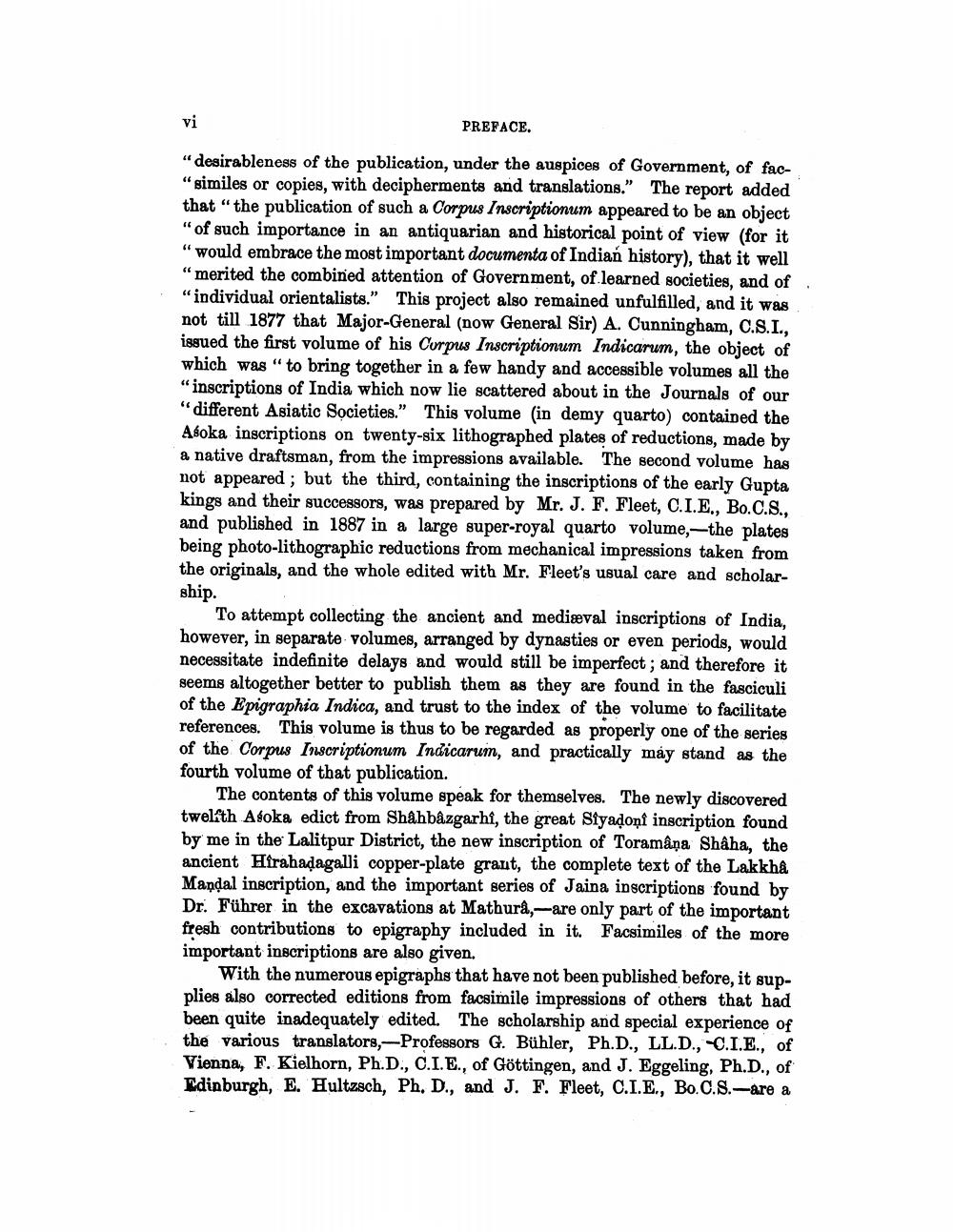Book Title: Epigraphia Indica Vol 01 Author(s): Jas Burgess Publisher: Archaeological Survey of India View full book textPage 7
________________ PREFACE. “desirableness of the publication, under the auspices of Government, of fac"similes or copies, with decipherments and translations." The report added that “the publication of such a Corpus Inscriptionum appeared to be an object "of such importance in an antiquarian and historical point of view (for it "would embrace the most important documenta of Indian history), that it well "merited the combined attention of Government, of learned societies, and of "individual orientalists." This project also remained unfulfilled, and it was not till 1877 that Major-General (now General Sir) A. Cunningham, C.S.I., issued the first volume of his Corpus Inscriptionum Indicarum, the object of which was "to bring together in a few handy and accessible volumes all the "inscriptions of India which now lie scattered about in the Journals of our "different Asiatic Societies." This volume in demy quarto) contained the Aboka inscriptions on twenty-six lithographed plates of reductions, made by a native draftsman, from the impressions available. The second volume has not appeared; but the third, containing the inscriptions of the early Gupta kings and their successors, was prepared by Mr. J. F. Fleet, C.I.E., Bo.C.S., and published in 1887 in a large super-royal quarto volume,--the plates being photo-lithographic reductions from mechanical impressions taken from the originals, and the whole edited with Mr. Fleet's usual care and scholarship. To attempt collecting the ancient and medieval inscriptions of India, however, in separate volumes, arranged by dynasties or even periods, would necessitate indefinite delays and would still be imperfect; and therefore it seems altogether better to publish them as they are found in the fasciculi of the Epigraphia Indica, and trust to the index of the volume to facilitate references. This volume is thus to be regarded as properly one of the series of the Corpus Inscriptionum Indicarum, and practically may stand as the fourth volume of that publication. The contents of this volume speak for themselves. The newly discovered twelfth Afoka edict from Shahbâzgarhi, the great Siyadoņi inscription found by me in the Lalitpur District, the new inscription of Toramâna Shâha, the ancient Hfrahadagalli copper-plate grant, the complete text of the Lakkhâ Mandal inscription, and the important series of Jaina inscriptions found by Dr. Führer in the excavations at Mathura,--are only part of the important fresh contributions to epigraphy included in it. Facsimiles of the more important inscriptions are also given. With the numerous epigraphs that have not been published before, it supplies also corrected editions from facsimile impressions of others that had been quite inadequately edited. The scholarship and special experience of the various translators,-Professors G. Bühler, Ph.D., LL.D., C.I.E., of Vienna, F. Kielhorn, Ph.D., C.I.E., of Göttingen, and J. Eggeling, Ph.D., of Edinburgh, E. Hultzsch, Ph. D., and J. F. Fleet, C.I.E., Bo.C.S.-are aPage Navigation
1 ... 5 6 7 8 9 10 11 12 13 14 15 16 17 18 19 20 21 22 23 24 25 26 27 28 29 30 31 32 33 34 35 36 37 38 39 40 41 42 43 44 45 46 47 48 49 50 51 52 53 54 55 56 57 58 59 60 61 62 63 64 65 66 67 68 69 70 71 72 ... 528
